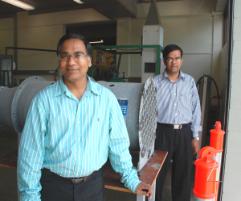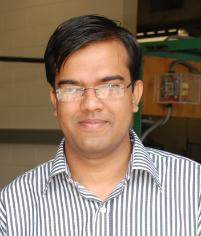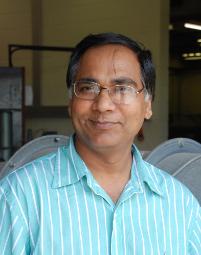Rockhampton duo plan to turn green waste into viable bio-oil
Published on 07 February, 2008
Two Rockhampton-based researchers will design, build and test-run their own thermo-chemical conversion reactor to produce valuable bio-oil from green wastes left at council dumps.
Whereas burning these wastes would only produce energy, a pyrolysis reactor (extreme heat in a oxygen-free chamber) has the potential to produce bio-oils as well as potentially useful gases and waste solids.

Rasul (front) and Ashfaque are preparing for their project
Dr Mohammad Rasul and Ashfaque Ahmed Chowdhury, from Central Queensland University both have strong backgrounds in renewable energy technologies and will work on the project together.
They have already ascertained that pyrolysis is the most likely and viable process to produce useful and transportable fuels.
By testing the process and outputs in great detail, they plan to show the characteristics of the bio-oil produced from various types of waste, including trees, logs, branches, leaves, sticks, paper and cardboard.
They will also assess the benefits of the technology by measuring the performance and calculating the cost-benefits.
Dr Rasul said it was hoped the cylinder-shaped pyrolysis reactor would be set up by mid-2008. The initial equipment will be around 2m high with a diameter of about 30cm and will not produce any emissions.
"We hope to extend the project to include computer modelling of the fluid flow and if possible also the heat transfer, to provide a more complete insight into the process," he said.

Ashfaque Ahmed Chowdhury
Dr Mohammad Rasul

